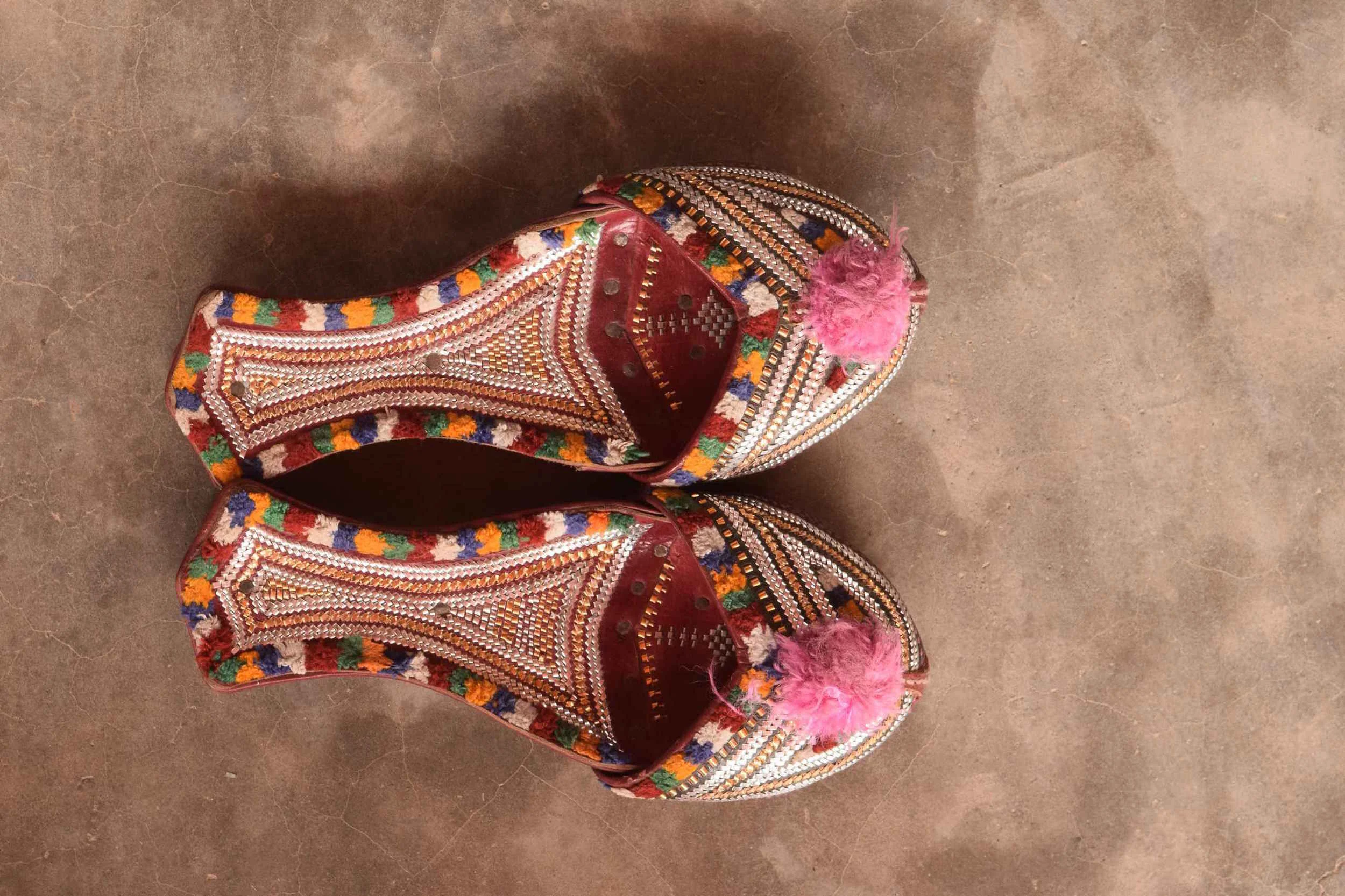
Varolo or Jhalani Jooti
Jhalani Jhootis are bedecked with intricate silver or zari work. Earlier Meghwars used real silver zari to adorn these shoes but these are now replaced with synthetic ones. The colorful torni border on the shoe was a favourite among the women. Both sides of the sole were etched by hand with floral designs and geometric shapes. These motifs varied according to the preferences of the community or the artisan. These shoes were popular amongst all the Kachchhi communities except the Rabaris, who preferred a more rugged style of work. In Banni, The leather artisan made a special pair of jhootis for the Maldhari bride. He would be welcomed with the shoes at the wedding to the beats of a drum and music. The shoes were blessed with offerings by guests and given to the artisan as a token of gratitude. Apart from this, he would be rewarded with either a baby cow, buffalo or goat, sometimes a camel. This system still exists in some parts of the Banni.

Varolo or Boot
These shoes were made in vibrant shades of red, yellow and blue sourced from Khatri dyers, and ornamented with silver or zari work. Designs and cuts on the soles were differentiated by community. The Maldharis of the Banni region were the largest users of these.Along with the rest of the wedding attire, they would always keep these shoes safe as part of the wedding trousseau. The bridegroom’s family would bless the shoes during a wedding meal ritual. This is still prevalent in some parts of the Banni.

